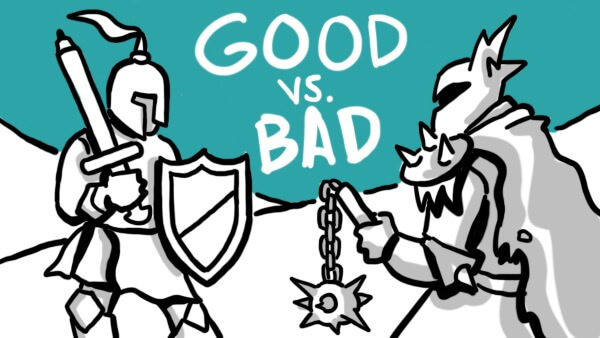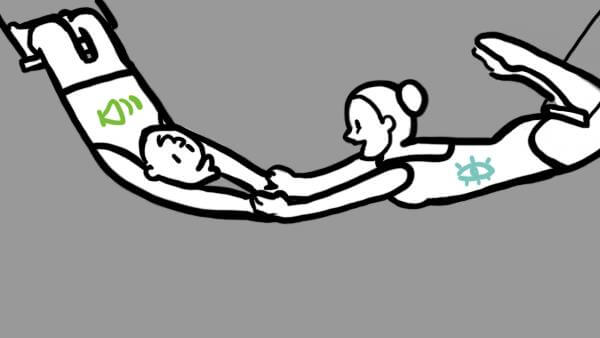It’s hard to overestimate the importance of training in an employee’s effectiveness. Even the most skilled new hire needs an understanding of their employer’s processes, expectations, support tools, culture, and more.
Whiteboard video is a hand-drawn form of video. It is meant to promote engagement with messaging and increase the rate of information retention by your audience. And it is uniquely suited to training purposes.
Let’s look at some of the ways whiteboard video can streamline internal training.
Video helps Viewers Retain Information
Video (generally) should be a part of training. It is “the most effective modality for learning,” approaching in-person instruction in effectiveness. In particular, the synchronization of audio and visual information helps reach in-person learning levels without bringing along potential distractions.
Video’s rewind ability, too, can greatly increase viewer retention. It allows the trainee to avoid the social frustrations of stopping an in-person training exercise or presentation to ask for clarification. Rewinding is a solitary activity. It allows the viewer to revisit and reinforce any segment of information they need. And they don’t need to worry about the reactions of their peers or leaders.
Synchronization Brings Everything Together
The above two celebrations of video apply broadly to all forms of video. But whiteboard’s particular attention to synchronization shows why it deserves the highest consideration for internal training use.
Synchronization is one of the central reasons why whiteboard works. It is a key tenet of TruScribe’s guiding principles of Scribology, and an element on which creators spend hours of time.
From the scripting stage through the drawings and voiceover phases of production, whiteboard content creators work to create that synchronization.
When audio and visual information are synchronized, retention of information after 72 hours is 65%. This rate is six times greater than audio-only messages. And it is nearly double the retention rate of visual-only information.
Product Explanations Work Great on the Whiteboard
Whiteboard video is also the perfect way to train employees in how the product works. Many companies don’t concern themselves overmuch with such training. But understanding the product, not just the job, can greatly increase your employees’ ability to communicate with clients. And it makes them more productive.
Of course, like many training materials, product explanations can be dry. Unless they’re made in whiteboard video by skilled professionals. Whiteboard video excels at apparently-boring topics. It uses a moving human hand, engaging drawings, a focus-driving accent color and more. Together, they transform your subject matter from difficult to digestible. It’s the ideal format to take an oft-ignored training opportunity and turn it into a long-term success.
Whiteboard Videos are Engaging
Then, there’s the engagement boost.
Aside from the aforementioned improvement in retention rates, whiteboard video can drive trainee engagement up dramatically—employees are 75% more likely to watch a video than read documents, emails, or online instructions.
Now, consider the engagement-boosting powers that only come with whiteboard video.
The hand-drawn style promotes engagement by giving the eye a human form to follow.
The continuous motion of that hand in the creation of drawings pulls the eye around the frame by triggering the lizard brain’s need to follow motion.
Surprise, with each new drawing rendered, releases dopamine, the curiosity-driving neurotransmitter that maintains engagement.
Those are just some of the ways whiteboard is uniquely situated to boost engagement and make training that much simpler.
Show Your Workplace Culture
Remember that training isn’t just about the raw how-to of the job. It’s also about introducing the new hire to the company, their work environment, and their coworkers. In short, it’s the time when new hires get their first impression of workplace culture—and whiteboard video is great for articulating workplace culture during onboarding.
You Can Tell Your Visual Story

You’ll also need a presentation strategy for your training video. This means “engag[ing] viewers and connect[ing] to their real work situations.” Essentially, this is another way of asking how you’ll script your visual story. With a whiteboard video script, you’ll be focusing on your message and the narrative that gets you there: finding the pain point (likely, it’ll be a lack of knowledge), creating a character or concept for the audience to latch onto, etc.
Once your script gets to the whiteboard artists, they’ll concept just the right images to reinforce that message, being well aware of their audience and the needs of your business. With strong synchronization, the visual storytelling that makes up your whiteboard training video strategy will engage—and stay with—your audience.
General Benefits of Training Videos
Finally, let’s close with a few benefits of video in training that apply broadly as well as specifically to whiteboard video. For one, training videos are scalable. This means that they’re applicable under a variety of workloads and operational demands. So, when your company expands, you won’t need to retrain your instructors to work with plus-sized audiences—you’ll simply continue to show your training videos to new hires.
This is similar to using whiteboard video to create evergreen content, or content that remains relevant and functional over time. Training videos are a good example of evergreen content because they typically don’t require change, and they can be used for years. There are few kinds of content more cost-effective than evergreen: once your video is done, you likely won’t have to make another of its kind for a long time. The same can’t be said for in-person trainers and scheduled sessions, as they cost money every time they’re used.
Whiteboard video is uniquely suited to training and development because it is a medium designed to boost engagement and retention of a message in its audiences. Through its appeal to audiences, rewind ability, effective synchronization, and more, whiteboard video truly should be a go-to for trainers.
Does your company currently use video in its training materials?
Have you recently made the shift to video—and if so, what kind of changes are you seeing?
How do you think the whiteboard approach could improve your training and development videos?

